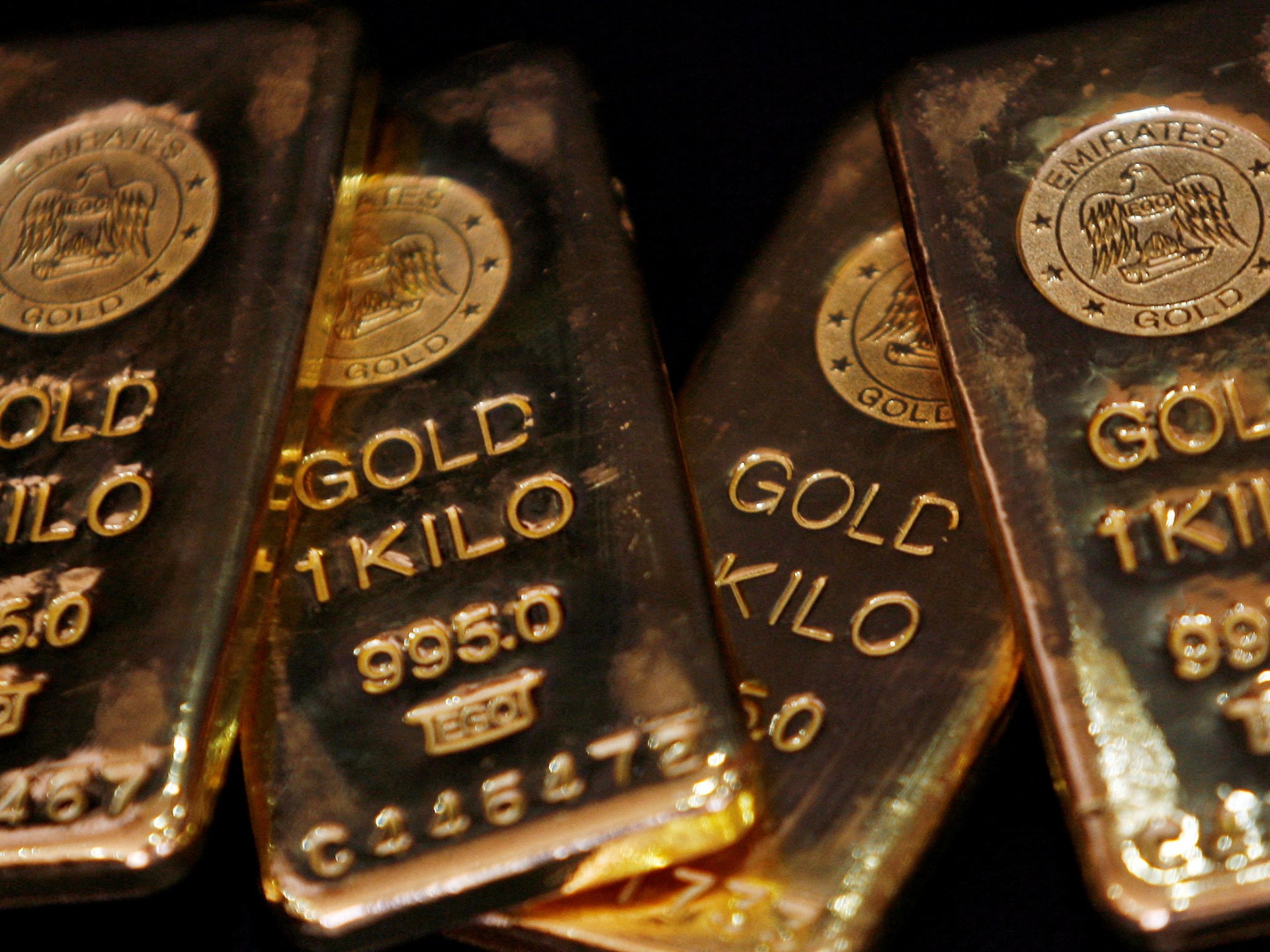South America
Why are gold prices soaring amid US President Trump’s tariffs?

The Impact of Trump’s Tariffs on Global Markets and Gold Prices
President Donald Trump’s recent implementation of tariffs on steel and aluminium imports has caused significant market instability, affecting everything from grocery prices to the value of gold. The tariffs, which include a 25% tax on steel and a raised 25% tax on aluminium, have been met with concern globally, as they threaten to disrupt trade relationships and spark inflation. One of the most notable consequences of this economic policy has been the surge in gold prices, which reached record highs in recent days. This article explores why gold is considered a safe asset, how its value responds to uncertainty, and the broader economic implications of Trump’s tariffs.
Why Gold is a Safe-Haven Asset
Gold has long been viewed as a safe-haven asset, a reliable store of value during times of economic uncertainty. Unlike currencies, which can lose value due to inflation or overprinting, gold tends to retain its worth because it is a scarce resource with universal appeal. The World Gold Council notes that gold is a highly liquid asset with no credit risk, characteristics that make it a preferred choice for investors seeking stability. Historically, gold prices have spiked during periods of global turmoil, such as the 2008 financial crisis and the 2022 Russian invasion of Ukraine. In recent days, gold prices have broken records, reaching over $2,942 per ounce, as investors seek refuge from the economic volatility caused by Trump’s tariffs.
Historical Context: Gold Prices During Times of Uncertainty
The relationship between gold prices and economic uncertainty is well-documented. In early 2008, as the U.S. housing crisis unfolded, gold prices surpassed $1,000 per ounce for the first time. While prices dipped briefly, they rebounded and continued to climb, reaching a record high of nearly $1,900 per ounce by September 2011. More recently, the Russian invasion of Ukraine in February 2022 sent shockwaves through global markets, pushing gold prices to $2,070 per ounce by March of that year. This historical pattern suggests that investors turn to gold during times of crisis, and the current surge in gold prices is no exception.
The Trigger: Trump’s Steel and Aluminium Tariffs
The latest spike in gold prices can be directly linked to Trump’s decision to reinstate and increase tariffs on steel and aluminium imports. These tariffs, which went into effect this week, apply to all countries, including key suppliers like Canada and Mexico. Trump has also eliminated tariff exclusions on products that use these metals, as well as country-specific exceptions and quota deals. The move is part of Trump’s broader “America First” economic agenda, which aims to bolster domestic industries. “Our nation requires steel and aluminium to be made in America, not in foreign lands,” Trump said, echoing rhetoric he has used in the past. While the tariffs are intended to protect U.S. industries, they have already sparked fears of inflation and retaliation from trading partners.
The U.S. Steel and Aluminium Supply Chain
The U.S. relies heavily on imports to meet its steel and aluminium needs. According to the U.S. International Trade Administration, Canada is the largest supplier of both steel and aluminium to the U.S., followed by Mexico, Brazil, South Korea, Germany, and Japan. Other major aluminium suppliers include the United Arab Emirates, South Korea, and China. The U.S. imports roughly a quarter of the steel it uses, making these tariffs potentially disruptive to industries that rely on these metals. Trump’s decision to impose tariffs on these imports has drawn criticism from allies, who argue that the move will harm integrated supply chains and lead to economic retaliation.
Global Response to Trump’s Tariffs
The international community has responded to Trump’s tariffs with concern and criticism. Canadian Prime Minister Justin Trudeau called the tariffs “entirely unjustified” and vowed to defend Canadian workers and industries. “We are the U.S.’s closest ally. Our economies are integrated,” Trudeau said. “Canadian steel and aluminium are used in a number of key American industries, whether it’s defence, shipbuilding, manufacturing, energy, automotive.” China has also pushed back, imposing its own tariffs on U.S. imports like coal and crude oil. Experts warn that while these tariffs are unlikely to trigger a full-scale trade war, they could lead to further economic volatility and retaliation from other trading partners. As global markets brace for the impact of Trump’s policies, gold continues to shine as a safe-haven asset, offering investors a refuge from the chaos.